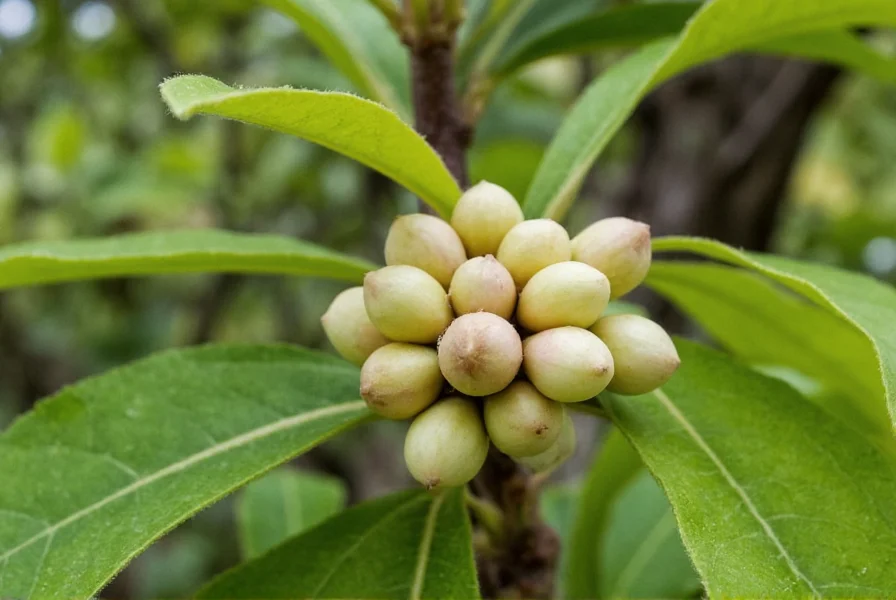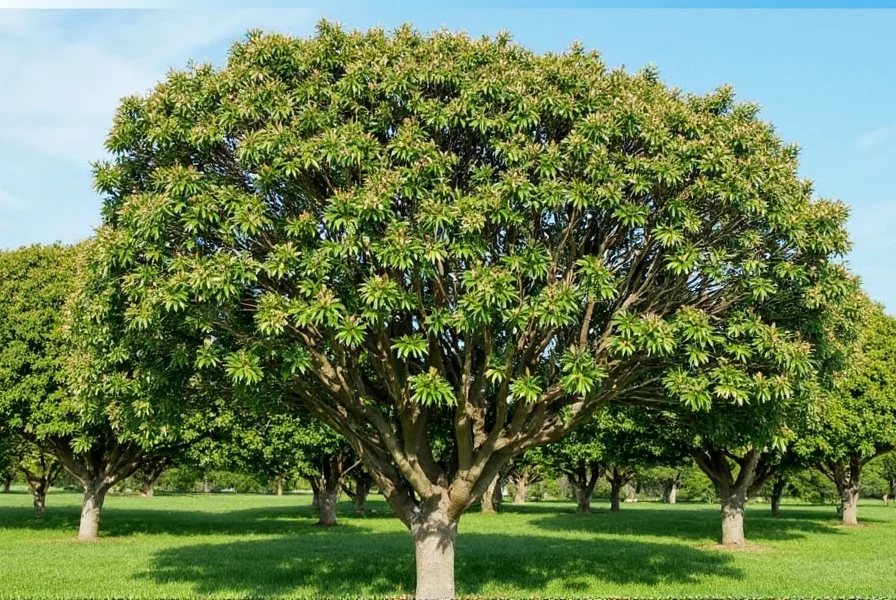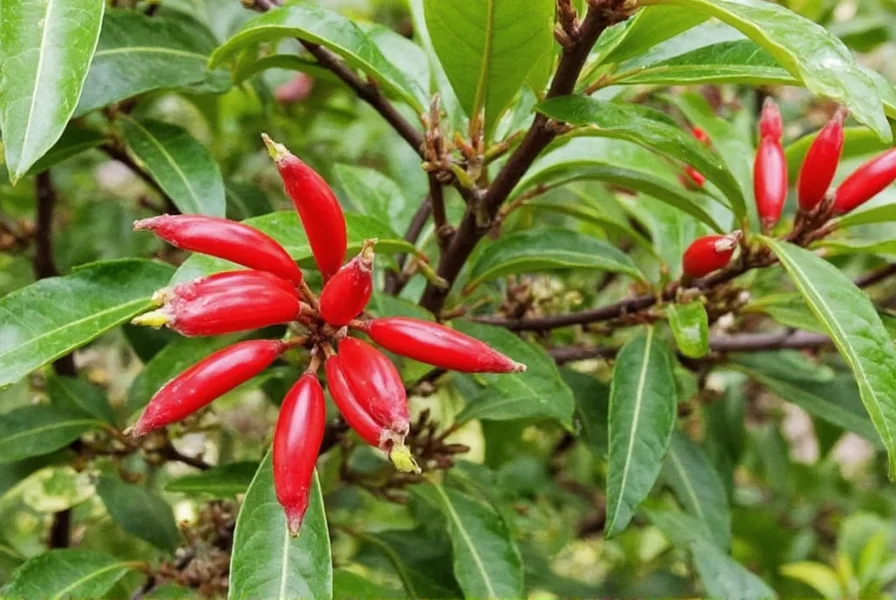For gardeners and agricultural enthusiasts exploring how to grow clove tree specimens, understanding the botanical requirements is essential. The Syzygium aromaticum belongs to the Myrtaceae family and has been cultivated for centuries across tropical regions worldwide. This comprehensive guide details everything you need to know about this economically important species, from its natural habitat to cultivation techniques and practical applications.
Botanical Classification and Scientific Background
The clove tree's scientific name, Syzygium aromaticum, reflects its distinctive aromatic properties. Formerly classified as Eugenia caryophyllata, this evergreen species produces the unopened flower buds that become the spice cloves after drying. Each tree typically begins flowering when 6-8 years old, reaching peak production between 15-25 years of age. The tree's lifecycle spans approximately 80 years under optimal conditions, making it a long-term investment for tropical agricultural operations.
Natural Habitat and Geographic Distribution
Native to the Maluku Islands (formerly known as the Spice Islands) in Indonesia, the clove tree grows naturally in volcanic soil environments with consistent rainfall. Today, major commercial production occurs in Indonesia, Madagascar, Tanzania, and Sri Lanka. The tree requires specific clove tree growing conditions including:
| Requirement | Optimal Range | Notes |
|---|---|---|
| Temperature | 22-30°C (72-86°F) | Frost-sensitive; cannot tolerate temperatures below 15°C |
| Rainfall | 1,500-2,500 mm annually | Requires well-distributed rainfall with dry season for flowering |
| Soil Type | Deep, fertile volcanic | Well-drained loam with pH 5.5-6.5 preferred |
| Altitude | Sea level to 800 meters | Lower elevations produce higher quality cloves |
These specific environmental requirements explain why Syzygium aromaticum cultivation remains limited to tropical regions near the equator. Attempts to grow clove trees outside these parameters typically result in poor yields or tree mortality.

Physical Characteristics and Identification
Mature clove trees reach heights of 12-15 meters with a conical shape and dense foliage. The tree features:
- Leaves: Opposite, simple, glossy dark green leaves measuring 5-15 cm long with prominent veins
- Bark: Smooth, reddish-brown when young, becoming rougher with age
- Flowers: Small, crimson buds that develop in terminal clusters
- Fruit: Small, purple berries containing a single seed (not commercially valuable)
The distinctive feature of the clove tree is its flower buds, which start pale and gradually turn green, then bright red as they mature. These buds are harvested just before they open for the highest quality cloves. Understanding these characteristics helps in proper clove tree identification and timing the crucial harvesting process.
Harvesting Process and Post-Harvest Treatment
The clove tree harvesting process requires careful timing and technique. Harvesters collect the unopened flower buds when they turn from green to pinkish-red but before they open. This typically occurs twice annually, depending on the region.
After harvesting, the buds undergo sun-drying for 4-7 days until they turn dark brown and the cloves rattle when shaken. Proper drying preserves the essential oils that give cloves their distinctive aroma and flavor. The highest quality cloves contain 15-20% essential oil, primarily eugenol, which provides the characteristic spicy scent.
Traditional and Modern Applications
For centuries, communities in clove-producing regions have utilized various parts of the tree beyond just the flower buds. The traditional uses of clove tree include:
- Culinary: Whole or ground cloves flavor meats, sauces, baked goods, and beverages
- Dental care: Eugenol provides natural pain relief for toothaches
- Traditional medicine: Used for digestive issues, respiratory conditions, and as an antiseptic
- Perfumery: Essential oil serves as a base note in many fragrances
- Insect repellent: Natural deterrent for mosquitoes and other pests
Modern research continues to investigate the potential health benefits of compounds found in clove trees, particularly regarding antioxidant and antimicrobial properties. However, traditional applications remain the primary commercial use of this valuable tree.

Common Challenges in Clove Tree Cultivation
Growing clove trees presents several challenges that affect yield and quality. The most significant issues include:
- Phytophthora fungus: Causes root rot in poorly drained soils
- Clove bud mite: Damages developing flower buds
- Drought stress: Reduces flowering and bud development
- Excessive rainfall: Promotes fungal diseases and bud drop
- Nutrient deficiencies: Particularly boron and magnesium
Successful clove tree care requires regular monitoring for pests and diseases, proper soil management, and appropriate pruning to maintain tree health and productivity. Many growers implement integrated pest management strategies to minimize chemical use while protecting their crops.
Economic Importance and Sustainability Considerations
The global clove market represents a significant economic resource for producing countries, with annual production exceeding 150,000 metric tons. Indonesia remains the largest producer, followed by Madagascar and Tanzania. Sustainable cultivation practices are increasingly important as demand grows for ethically sourced spices.
Agroforestry approaches that integrate clove trees with other crops help maintain biodiversity while providing economic stability for farming communities. Certification programs focusing on sustainable harvesting and fair labor practices are becoming more common in the spice industry, addressing growing consumer concerns about ethical sourcing.
Conclusion
The clove tree (Syzygium aromaticum) represents a remarkable example of a single plant species with global economic and cultural significance. From its origins in the Maluku Islands to its current widespread cultivation across tropical regions, this tree continues to provide valuable resources for culinary, medicinal, and commercial applications. Understanding the specific requirements for growing and harvesting clove trees helps ensure sustainable production of this cherished spice for future generations.
Frequently Asked Questions
How long does it take for a clove tree to produce harvestable cloves?
Clove trees typically begin flowering when they are 6-8 years old. However, they reach peak production capacity between 15-25 years of age. The tree's productive lifespan for commercial clove production generally spans 40-50 years under optimal growing conditions.
Can clove trees be grown in containers or as houseplants?
While young clove trees can be started in containers, they are not suitable as permanent houseplants due to their size and environmental requirements. Clove trees need full sun, high humidity, and warm temperatures year-round. They can grow up to 15 meters tall in ideal conditions, making them impractical for indoor cultivation beyond the seedling stage.
What are the ideal soil conditions for growing clove trees?
Clove trees thrive in deep, fertile volcanic soils that are well-drained with a pH between 5.5 and 6.5. The soil should be rich in organic matter and maintain consistent moisture without becoming waterlogged. While they prefer loamy soils, they can adapt to various soil types as long as drainage is excellent and nutrient levels are maintained.
How are cloves harvested from the clove tree?
Cloves are harvested by hand-picking the unopened flower buds when they turn from green to pinkish-red but before they open. This typically happens twice a year. Harvesters carefully select only the properly colored buds, leaving immature green buds to develop. After harvesting, the buds are spread on mats and sun-dried for 4-7 days until they turn dark brown and the cloves rattle when shaken.
What's the difference between clove trees and other similar-looking trees?
The clove tree can be distinguished by its opposite, simple leaves with prominent veins, reddish-brown bark, and distinctive unopened flower buds that develop in terminal clusters. Unlike similar Myrtaceae family members, the clove tree produces the valuable spice cloves from its flower buds rather than fruit. The characteristic spicy aroma when leaves or buds are crushed is another identifying feature.











 浙公网安备
33010002000092号
浙公网安备
33010002000092号 浙B2-20120091-4
浙B2-20120091-4